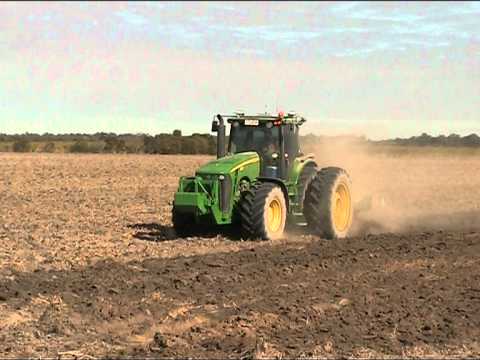AN occasional tillage to deal with weed, disease and compaction issues in no-till farming systems has no long term negative impacts and the benefits outweigh the negatives.
 That was one of the key points agricultural analyst, David Freebairn, raised in a wide-ranging discussion on tillage, stubble and zero-till systems at the Grains Research and Development Corporation (GRDC) Grains Research Update in Goondiwindi, Queensland.
That was one of the key points agricultural analyst, David Freebairn, raised in a wide-ranging discussion on tillage, stubble and zero-till systems at the Grains Research and Development Corporation (GRDC) Grains Research Update in Goondiwindi, Queensland.
While conservation farming systems have improved water quality and reduced erosion dramatically, Dr Freebairn said the practice of running a farming system without cultivating brought with it a number of challenges:
- You are completely reliant on herbicides.
- There is less nitrate, more disease.
- There is inevitably more leaf and root diseases because we are providing a substrate for them.
- Nematodes can be a problem.
- You can’t deep place nutrients in no-till.
- Inevitably there will be wet harvesting and plantings which will create wheeltracks and rills because water has to leave the landscape.
To counter some of these issues, Dr Freebairn said no-till farmers were increasingly making the decision to break their adherence to non-cultivation and apply a strategic tillage.
While he said there were consequences from disturbing the soil with an occasional tillage, the positives outweighed the negatives.
“Will a strategic tillage undo all the hard work that has made the soil special? You might dry out a seedbed, but if you are controlling weeds, that’s a positive. Controlling soil-borne diseases is a positive. There will be a short erosion risk, but if there is still stubble there the risk is low. Profitability and practicality is a positive,” he said.
“To me that is a good news story. It’s another tool that shouldn’t be disregarded.”
For those younger agronomists and researchers in the audience who had never seen the ‘bad old days’ of stubble burning and full-scale cultivation systems, Dr Freebairn put the evolution and adoption of no-till farming systems in Australia into a historical context.
“As cropping expanded across south eastern Australia, cropping systems were strongly influenced by experience from England and Europe. These systems, based on frequent tillage and clean fallows, were found to be wanting, especially in the northern cropping regions,” he said.
Dr Freebairn said in the 1950s and 1960s, the mainstay of soil erosion control was contour banks, yet erosion remained an issue.
“In the mid 1970s there was conflicting advice from government extension agencies. On one hand farmers were being told to burn or bury stubble to reduce diseases and facilitate tillage and planting, while the soil conservation fraternity were indicating retention of stubble even though tillage and planting machinery was not well suited,” he said.
Dr Freebairn said the 1970s was a turning point that saw the release in Australia of the first broad spectrum herbicide, Roundup, and the evaluation of tillage and planting equipment to handle high stubble loads.
That set the scene for a grand era of research, development and extension that ultimately led to the widespread adoption of no-till cropping regimes.
“This extensive investment in the exploration of conservation tillage forms a foundation for the cropping systems of today,” he said.
“Overall, we are at where we are now because farmers and consultants have worked out what works for them. The high adoption of no-till is testament to farmers, consultants, machinery companies and researchers building on the knowledge base.”
Grain Central: Get our free daily cropping news straight to your inbox – Click here


HAVE YOUR SAY